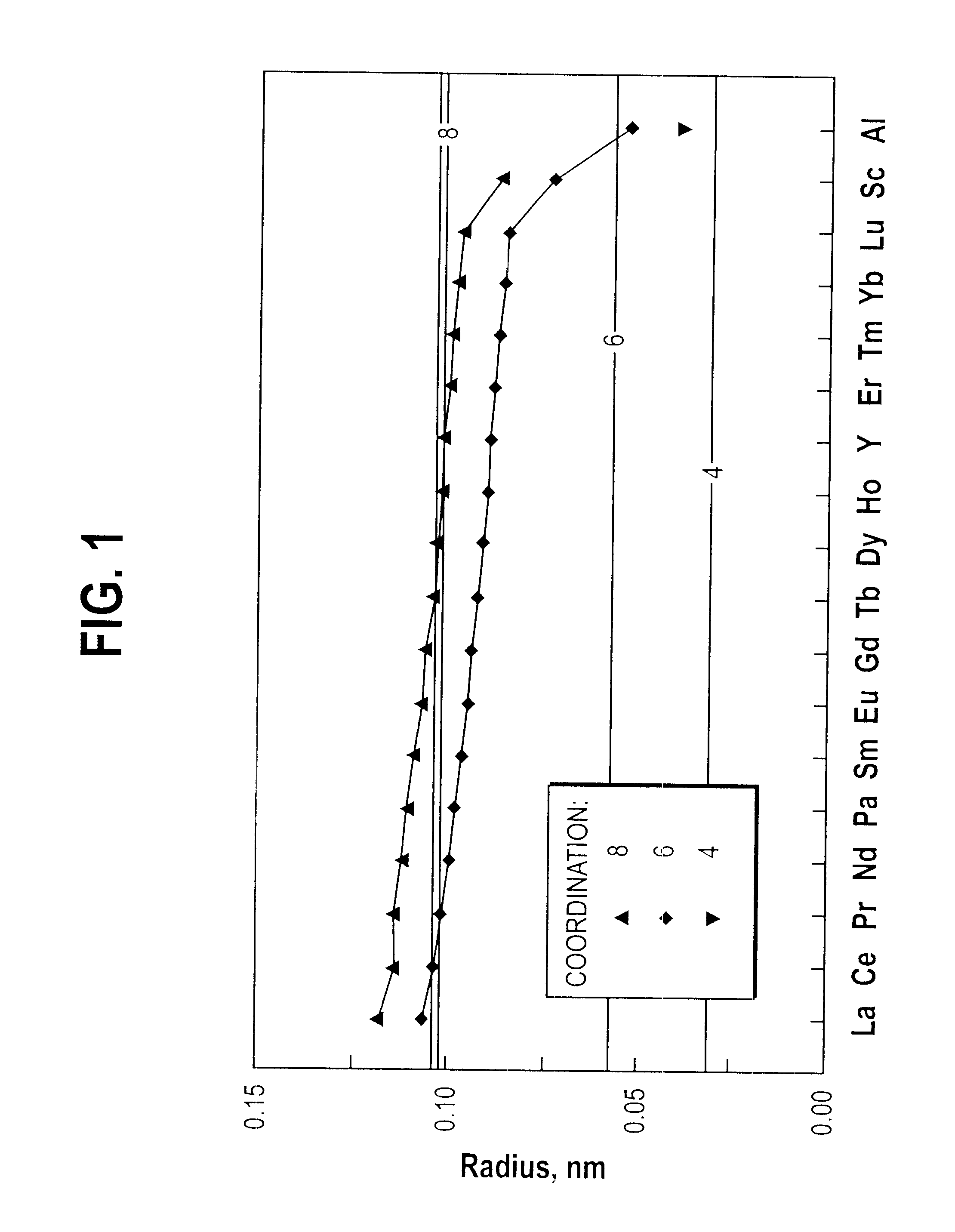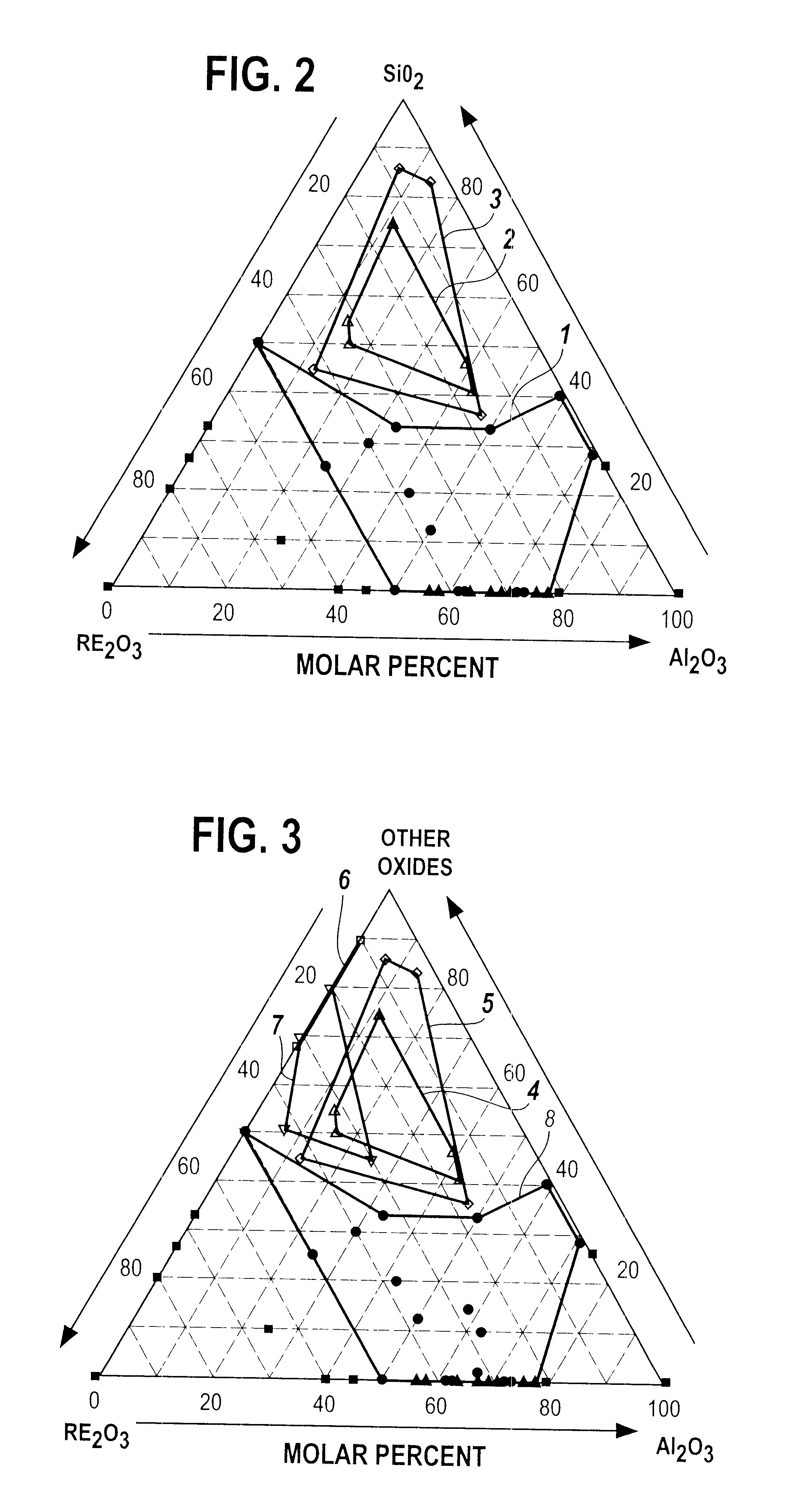Single phase rare earth oxide-aluminum oxide glasses
- Summary
- Abstract
- Description
- Claims
- Application Information
AI Technical Summary
Benefits of technology
Problems solved by technology
Method used
Image
Examples
examples i-t
to I-AC demonstrate that single-phase glass can be obtained at RE.sub.2 O.sub.3 :Al.sub.2 O.sub.3 ratios in the range from 27:73 (Example I-AA) to 1:1 (Examples I-Y and I-Z). The single phase glasses contain a molar percentage of La.sub.2 O.sub.3 that increases with the RE.sub.2 O.sub.3 :Al.sub.2 O.sub.3 ratio. Thus, at RE.sub.2 O.sub.3 :Al.sub.2 O.sub.3 =27 / 73, 3 / 5, and 1 / 1, the La.sub.2 O.sub.3 content at which single phase glass was obtained equals 0, at least 5, and at least 40 molar percent, respectively. We conclude that addition of La.sub.2 O.sub.3 to compositions over the full range of glass formation will allow single phase glass to be obtained, and that the lower limit for the RE.sub.2 O.sub.3 :Al.sub.2 O.sub.3 ratio at which single phase glass can be made is therefore at or below a value equal to 23:77, as given by example I-C. In summary, we have found that a single phase glass can be produced from a melt having a composition of 23-50 molar % RE.sub.2 O.sub.3 and 77-50 m...
PUM
| Property | Measurement | Unit |
|---|---|---|
| Fraction | aaaaa | aaaaa |
| Percent by mole | aaaaa | aaaaa |
| Percent by mole | aaaaa | aaaaa |
Abstract
Description
Claims
Application Information
 Login to View More
Login to View More - R&D
- Intellectual Property
- Life Sciences
- Materials
- Tech Scout
- Unparalleled Data Quality
- Higher Quality Content
- 60% Fewer Hallucinations
Browse by: Latest US Patents, China's latest patents, Technical Efficacy Thesaurus, Application Domain, Technology Topic, Popular Technical Reports.
© 2025 PatSnap. All rights reserved.Legal|Privacy policy|Modern Slavery Act Transparency Statement|Sitemap|About US| Contact US: help@patsnap.com



